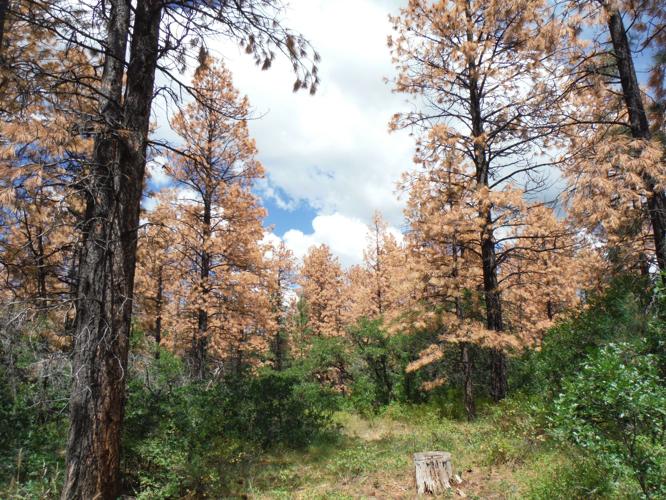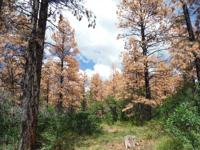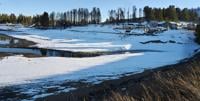While Colorado’s bark beetle infestations have slowed down, they continued to spread throughout the state’s forests in 2020, according to results from the aerial detection survey released Tuesday.
The annual survey monitors Colorado’s forest health conditions via helicopter flyovers. In 2020, 16.3 million acres were monitored from the air.
Officials said bark beetles were detected infesting areas of forests that weren’t infested the year before, including the spruce beetle and Douglas-fir beetle.
While the intensity of spruce and Douglas-fir beetle infestations have decreased since 2019, they continue to spread. The survey found that the spruce beetle was the most damaging forest pest in Colorado for the ninth year in a row.
New spruce beetle infestations were found in forests in eastern Gunnison County and western Chaffee County. Officials said the infestations in the counties are “severe” and “intense.”
In addition, spruce beetle populations increased in Hinsdale, San Juan, La Plata, Huerfano and Custer counties. In Grand County, the intensity of spruce beetle infestations has declined from past years.
Spruce beetles have affected at least 1.88 million forested acres in Colorado since 2000.
The Douglas-fir beetle is also spreading, continuing to invade forests in central and southern Colorado, including severe infestations in Gunnison, Saguache, Hinsdale and Mineral counties.
A map of insect and disease activity in Colorado forests.
Tammy Angel, acting regional forester for the USDA Forest Service, said Colorado’s bark beetle issues are exacerbated by the state’s current drought conditions.
“Our dry conditions are optimal for insect epidemics and tree diseases,” Angel said. “Where possible, managing forests for age and species diversity can increase resiliency.”
Due to droughts in Dolores and La Plata counties in southwest Colorado, the roundheaded pine beetle continues to spread through the regions’ ponderosa pine forests, including the San Juan National Forest.
The western spruce budworm also continues to be Colorado’s most damaging and widespread forest defoliator, intensely affecting forests in south-central Colorado.
“Colorado’s forests are vital to the economic and ecological health of our state,” said Mike Lester, director of the Colorado State Forest Service.
“With information from the survey, we better understand the health of our forests and can focus our efforts where they’ll make the biggest impact.”
Colorado’s annual aerial detection surveys are led by the USDA Forest Service, Rocky Mountain Region and Colorado State Forest Service. Due to COVID-19 protocols, 16.3 million acres were monitored compared to 30.2 million in 2019.












 Your Privacy Choices
Your Privacy Choices